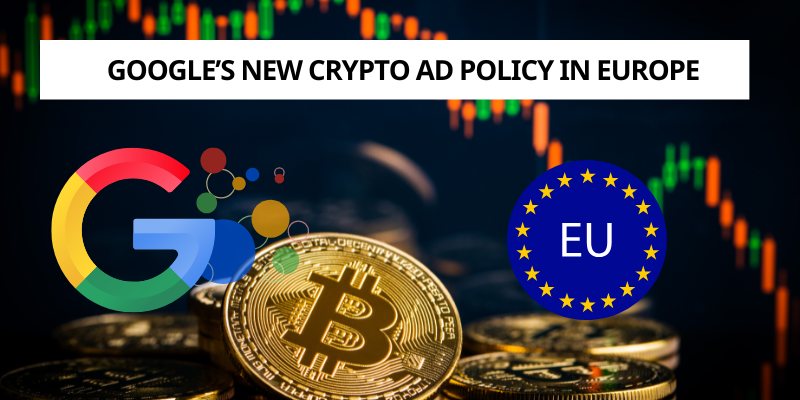Google’s MiCA Mandate: How New Crypto Ad Rules Could Reshape Europe’s Digital Asset Market
The European crypto industry is bracing for a seismic shift as Google prepares to implement strict new advertising requirements tied to the European Union’s Markets in Crypto-Assets (MiCA) regulation. Effective April 23, 2025, all crypto exchanges and wallet providers must be MiCA-licensed and Google-certified to advertise on the search giant’s platforms across Europe. The move, while lauded for its potential to curb scams, is also raising alarms about its impact on competition and innovation.
Contents
The Policy in Detail: What Advertisers Must Do
Google’s updated policy is clear: no MiCA license, no ads. To qualify, crypto firms must:
- Secure a MiCA or equivalent national license as a Crypto Asset Service Provider (CASP).
- Undergo Google’s certification process, which verifies regulatory compliance.
- Adhere to both EU-wide and country-specific legal requirements.
- Address any policy violations within a seven-day warning period or risk losing advertising privileges.
For firms already licensed in countries like France, Germany, or Finland, Google will honor existing credentials until the MiCA transition is fully implemented later in 2025.

The Upside: Fighting Fraud and Protecting Investors
The rationale behind Google’s move is straightforward: to protect users from fraudulent or unregulated crypto projects. The EU’s MiCA framework, which came into force in December 2024, sets out strict requirements for transparency, capital reserves, and consumer protection. By aligning its ad policy with MiCA, Google is helping to ensure that only legitimate, well-regulated firms can reach European consumers.
“Google’s policy is a logical extension of MiCA’s goals,” says Dr. Sophie Laurent, a regulatory affairs specialist at the European Blockchain Observatory. “It will make it much harder for bad actors to promote scams or misleading products, and should give consumers greater confidence in the ads they see.”
The move is also expected to bring greater consistency to crypto advertising across Europe, replacing the patchwork of national rules with a unified standard.
The Downside: High Costs and Barriers for Startups
However, the new rules come with significant downsides, particularly for smaller firms and startups. MiCA’s capital requirements—ranging from €15,000 to €150,000—are a major hurdle for new entrants. The costs of legal compliance, Google certification, and ongoing regulatory reporting add further strain.
“Startups are going to find it very tough to compete,” warns Hon Ng, chief legal officer at Bitget. “The dual demands of Google and local regulators could stifle innovation and make it almost impossible for smaller exchanges to get noticed.”
There is also concern that the complexity of the regulatory landscape—especially with additional national requirements layered on top of MiCA—could create confusion and enforcement gaps. Larger firms with dedicated compliance teams will have a clear advantage, potentially leading to greater market concentration.

Google’s Motivation: Self-Protection or Public Good?
While Google has positioned the policy as a step toward investor protection, many industry observers believe the primary motivation is legal risk management. By ensuring that only licensed, compliant firms can advertise, Google shields itself from potential liability as regulators ramp up scrutiny of tech platforms.
“Google’s main concern is avoiding legal trouble,” says Mattan Erder, general counsel at Orbs. “The company wants to make sure it’s not facilitating unlicensed activity or scams, especially as regulators get tougher.”
The Broader Impact: A New Playing Field for Crypto
Google’s policy is likely to set a precedent for other tech giants, with platforms like Meta and X expected to follow suit. The result could be a much more tightly regulated advertising environment for crypto firms, both in Europe and globally.
For consumers, the hope is that these changes will lead to a safer, more trustworthy market. For the industry, however, the challenge will be to adapt to the new rules without losing the dynamism and innovation that have defined the crypto space.
Conclusion
Google’s decision to require MiCA compliance for crypto ads in Europe is a watershed moment for the industry. While the move promises to enhance investor protection and bring greater legitimacy to the sector, it also risks raising barriers for smaller firms and consolidating the market in favor of established players. As the new rules take effect, the crypto community will be watching closely to see whether the benefits of regulation can be achieved without stifling the very innovation that has driven the industry’s growth.